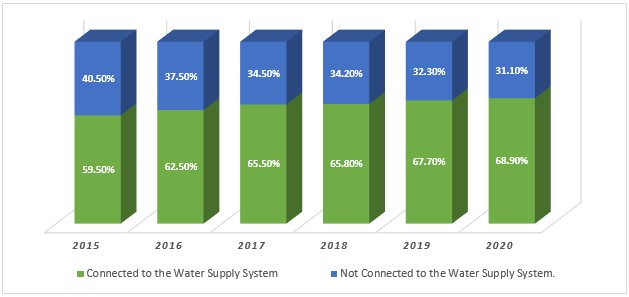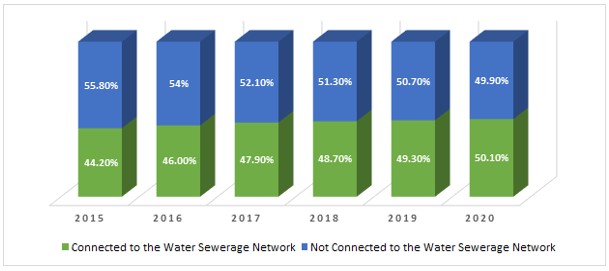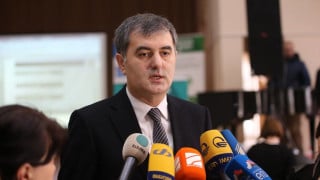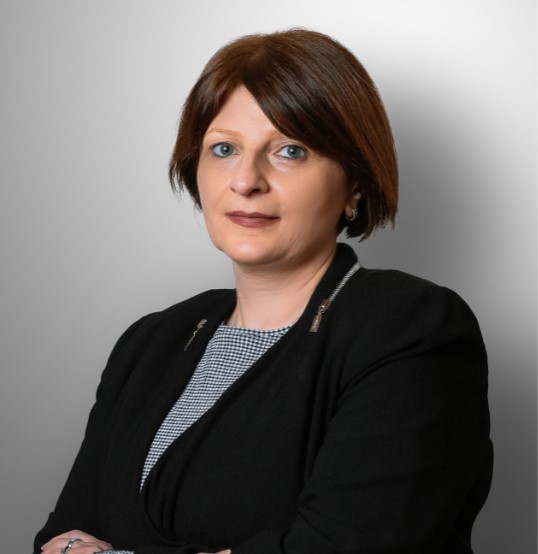Sozar Subari: “Most of the villages and many big cities are left without a centralised water supply and sewerage.”
Verdict: FactCheck concludes that Sozar Subari’s statement is TRUE.
Resume: According to 2020’s data, only 68.9% of Georgia’s total population is connected to a water supply system whilst only 50.1% is connected to a sewerage system. Therefore, one-third of the population is without a centralised water supply system and half of the people is without a sewerage system.
In the eight-year period of the Georgian Dream’s rule, the share of people with a water supply system at their homes increased by 15.6 percentage points which equals a 2% annual growth on average. From 2015 to 2020, the share of people connected to a water supply system increased by 9.4 percentage points alone. This is happening against the backdrop of solid and constantly growing budgets in the past several years for the rehabilitation of the water supply infrastructure. Therefore, Sozar Subari’s statement is TRUE.
Analysis:
During the committee hearings vis-à-vis the draft budget in the Parliament of Georgia, Sozar Subari, MP from the Georgian Dream, paid his attention to the deficiency of the water supply system in the regions and across Georgia and stated: “Most of the villages and many big cities are left without a 24/7 water supply as well as a centralised water supply and sewerage.”
According to the statistical data of the National Statistics Office of Georgia, only 73.4% of the Georgian population had a water supply system installed in their apartments in the country in 2020. The statistical figures of the past several years are as follows:
Table 1: Distribution of Households in Terms of Major Sources of Drinking Water (%)

Source: National Statistics Office of Georgia
According to the statistics, the share of people with a water supply system at their homes increased by 15.6 percentage points which equals a 2% annual growth on average.
Around 99.5% of people in Tbilisi have a water supply system at their homes. In regard to the regions, the figures are as follows for 2020: Kakheti – 61.4%, Shida Kartli – 52.1%, Kvemo Kartli – 67.5%, Samtskhe-Javakheti – 77.9%, Ajara Autonomous Republic – 77%, Guria – 42.4%, Samegrelo-Zemo Svaneti – 40.7%, Imereti – 61.2%, Mtskheta-Mtianeti – 71.1%, Racha-Lechkhumi and Kvemo Svaneti – 61.3%. According to these figures, Tbilisi is followed by Samtskhe-Javakheti, the Ajara Autonomous Republic and Mtskheta-Mtianeti by the number of water supply systems at homes.
According to the results of the survey conducted by the National Statistics Office of Georgia in water supplying enterprises, there were 25 enterprises in 2020 which were involved in the water supply business in Georgia. The total volume of water supplied by these enterprises to domestic households was 229.2 million cubic metres which is 2.6% more as compared to the same figure of the previous year. As of 31 December 2020, there were 2.57 million people (68.9%) connected to the water supply system which is 2.1% more as compared to the same figure of the previous year.
Graph 1: Share of Population Connected to the Water Supply System (%)

Source: National Statistics Office of Georgia
In regard to the share of people connected to the sewerage system, their number increased by 1.8% in 2020 as compared to the previous year and reached 1.87 million (50.1%) whilst the share of the population connected to wastewater treatment facilities increased by 0.4% and reached 1.36 million (36.5% of the total population).
Graph 2: Share of Population Connected to the Water Sewerage Network (%)

Source: National Statistics Office of Georgia
As we see, the data show that almost one-third of the Georgia’s population was not connected to a water supply system in 2020 whilst nearly half of the population has no sewerage network. This is happening against the background of a very solid and ever-increasing (2020 being the only exception) budget allocated for the rehabilitation of the water supply infrastructure in the past several years (GEL 166 million in 2016, GEL 184 million in 2017, GEL 195 million in 2018, GEL 294 million in 2019, GEL 245 million in 2020 and GEL 245 million [planned] in 2021).
Given the aforementioned circumstances, Sozar Subari’s statement is TRUE.








